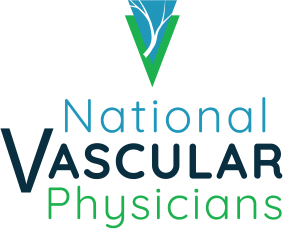
Smoking and Leg Pain
Why Do My Legs Hurt?: Smoking and Leg Pain
Posted on February 26, 2023 at 9:34 pm by / Artery Disease, Blog
How Does Smoking Impact Leg Pain?
Smoking can cause leg pain in a number of ways. Some possible mechanisms include:Smoking can cause leg pain in various ways, affecting the vascular and nervous systems. This detrimental habit can lead to conditions such as Peripheral Artery Disease (PAD), Raynaud’s disease, Neuropathy, Osteoporosis, and Chronic Obstructive Pulmonary Disease (COPD).
- Peripheral artery disease (PAD): Smoking can damage the blood vessels and increase the risk of PAD, which is a condition that occurs when the arteries in the legs become narrowed or blocked. PAD can cause leg pain, especially when walking or climbing stairs.
- Raynaud’s disease: Smoking can worsen the symptoms of Raynaud’s disease, which is a condition that affects the blood vessels in the fingers and toes. When the blood vessels narrow, it can cause pain, numbness, and tingling in the affected areas.
- Neuropathy: Smoking can damage the nerves, which can lead to neuropathy, or nerve damage. Neuropathy can cause pain, numbness, and tingling in the legs.
- Osteoporosis: Smoking can increase the risk of osteoporosis, which is a condition that causes the bones to become weak and brittle. Osteoporosis can cause leg pain, especially in the hips and knees.
- Chronic obstructive pulmonary disease (COPD): Smoking can increase the risk of developing COPD, a group of lung diseases that can cause difficulty breathing and leg pain.
If you are experiencing leg pain, it is important to see a doctor for a proper evaluation and treatment. Smoking can cause a variety of serious health problems, and it is important to quit smoking to improve your overall health and reduce your risk of developing these and other health problems.
Prevention and Management of Smoking-Related Leg Pain
Preventing smoking-related leg pain requires a multi-faceted approach, including smoking cessation, lifestyle modifications, and proactive healthcare management. Quitting smoking is the most crucial step in preventing further damage to the vascular and nervous systems. Incorporating regular physical activity and maintaining a healthy diet can also contribute to improving vascular health and reducing the risk of leg pain. Additionally, seeking medical advice for early detection and management of potential vascular and nerve-related issues is imperative.
Support and Resources for Smoking Cessation
Finding the right support and resources to aid in smoking cessation can significantly impact an individual’s ability to quit smoking and reduce the risk of developing smoking-related leg pain. Utilizing evidence-based programs, support groups, and counseling services can provide the necessary tools and guidance for successful smoking cessation. Moreover, exploring nicotine replacement therapies and prescription medications under the supervision of healthcare professionals can bolster the efforts to overcome nicotine addiction and mitigate the potential impact on leg pain.
Vascular Treatment Options for Smoking-Related Leg Pain
When addressing leg pain caused by smoking-related vascular issues, treatment options include minimally invasive procedures such as angioplasty to widen narrowed arteries, stent placement to maintain blood flow, surgical bypass for severe blockages, atherectomy to remove plaque buildup, and vascular rehabilitation for long-term recovery.
Contact us today to see how we can help!
Connect with National Vascular Physicians today to learn how we can support you in addressing smoking-related leg pain and optimizing your vascular health.
Here are some resources that you may find helpful if you are seeking information about smoking and leg pain:
- American Heart Association: This organization provides information about the link between smoking and PAD, including how to reduce your risk and manage the condition. You can find more information here: https://www.heart.org/en/health-topics/peripheral-artery-disease/causes-of-p-a-d/smoking
- National Heart, Lung, and Blood Institute: This institute provides information about the link between smoking and COPD, including how to quit smoking and manage the condition. You can find more information here: https://www.nhlbi.nih.gov/health-topics/copd
- American Cancer Society: This organization provides information about the link between smoking and osteoporosis, including how to reduce your risk and manage the condition. You can find more information here: https://www.cancer.org/healthy/eat-healthy-get-active/acs-guidelines-nutrition-physical-activity-cancer-prevention/guidelines/risk-reduction/smoking.html
- American Academy of Family Physicians: This organization provides information about the link between smoking and neuropathy, including how to reduce your risk and manage the condition. You can find more information here: https://www.aafp.org/afp/2003/0315/p1325.html
- Mayo Clinic: This clinic provides information about the link between smoking and Raynaud’s disease, including how to reduce your risk and manage the condition. You can find more information here: https://www.mayoclinic.org/diseases-conditions/raynauds-disease/symptoms-causes/syc-20350958
It’s important to note that quitting smoking can greatly reduce your risk of developing these and other health problems. There are many resources available to help you quit smoking, including nicotine replacement therapy and prescription medications. Your doctor can help you choose the best approach for your individual needs.



